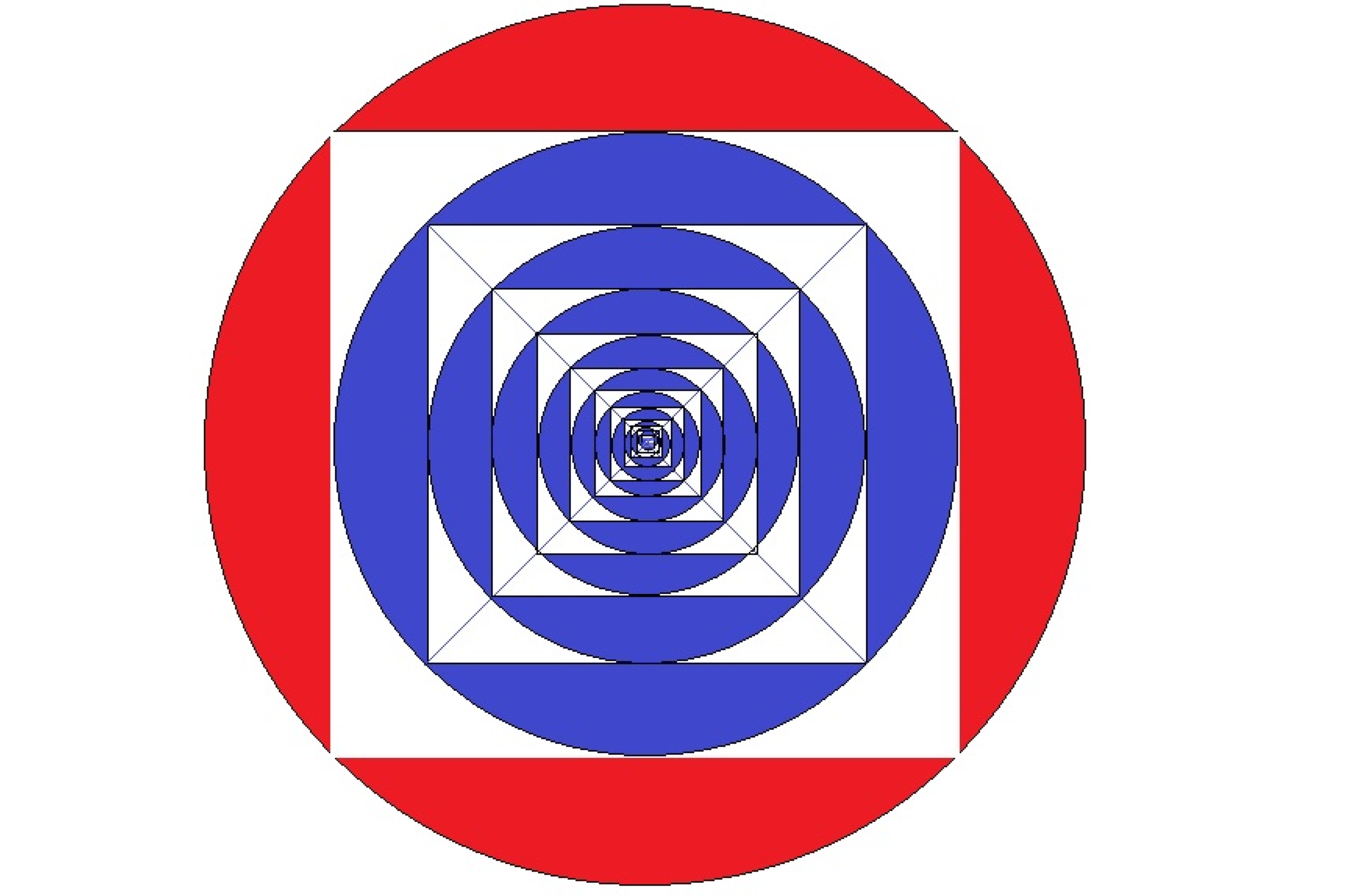Geometric Mystery

The image above demonstrates a big circle with an inscribed square, which also inscribes another circle with another inscribed square, progressing infinitely.
Which color has more area?
This section requires Javascript.
You are seeing this because something didn't load right. We suggest you, (a) try
refreshing the page, (b) enabling javascript if it is disabled on your browser and,
finally, (c)
loading the
non-javascript version of this page
. We're sorry about the hassle.
2 solutions
Let R be the radius of the biggest circle and S be the side length of the biggest inscribed square.
Then the diameter 2 R is the length of the square's diagonal, so S 2 + S 2 = ( 2 R ) 2 = 4 R 2 .
S = R 2
Clearly, the red area = π R 2 − S 2 = π R 2 − 2 R 2 = R 2 ( π − 2 )
For the second biggest circle, its diameter = S = R 2 , so its radius r = 2 R .
Again, for the second biggest inscribed square, the diameter equals the diagonal in length, so the side length s can be calculated as:
s 2 + s 2 = ( 2 r ) 2 = 4 r 2
s = r 2 = R
Therefore, the area of the outermost blue area = π r 2 − s 2 = π ( 2 R 2 ) − R 2 = ( 2 R 2 ) ( π − 2 ) .
In other words, the outermost blue area is half of the red area, and by evaluating the third biggest circle & square, we will get similar results that the area is progressing as half of the previous region.
Let T denote for the total red area. Then the total blue area = T [ 2 1 + ( 2 1 ) 2 + ( 2 1 ) 3 + . . . + ( 2 1 ) n ]
By using geometric progression, we will get:
T [ 2 1 + ( 2 1 ) 2 + ( 2 1 ) 3 + . . . + ( 2 1 ) n ] = T ( 1 − 2 1 2 1 ) = T
As a result, the blue and the red regions have the same area.
Let the radius of the largest circle be 1 . Then successive radii would be ( 2 ) n 1 , which means similar areas scaled to such radii would be in successive ratios of 2 1 , starting with 1 . The infinite sum 2 1 + 4 1 + 8 1 + . . . = 1 , so the blue areas have a total equal to that of the red one.